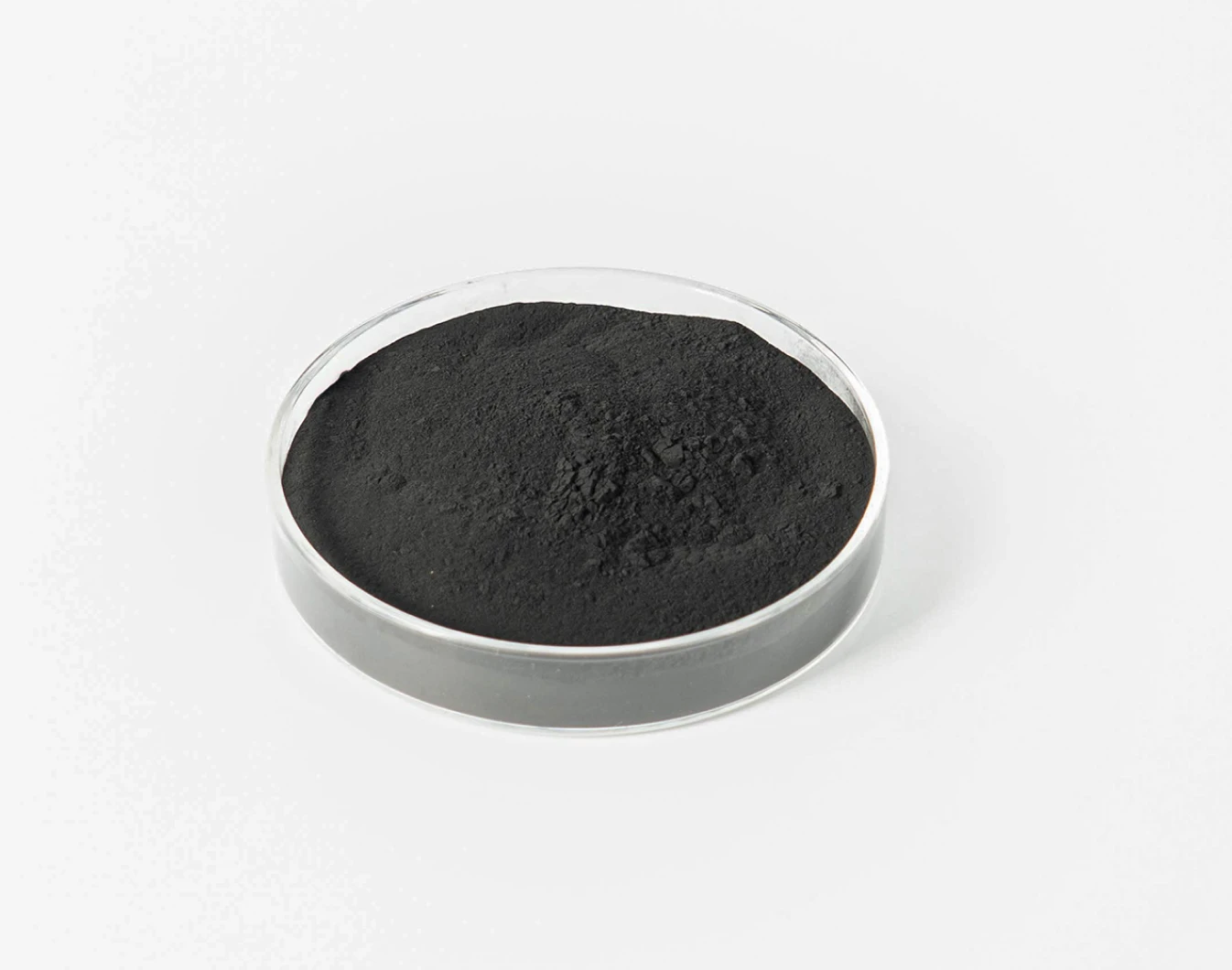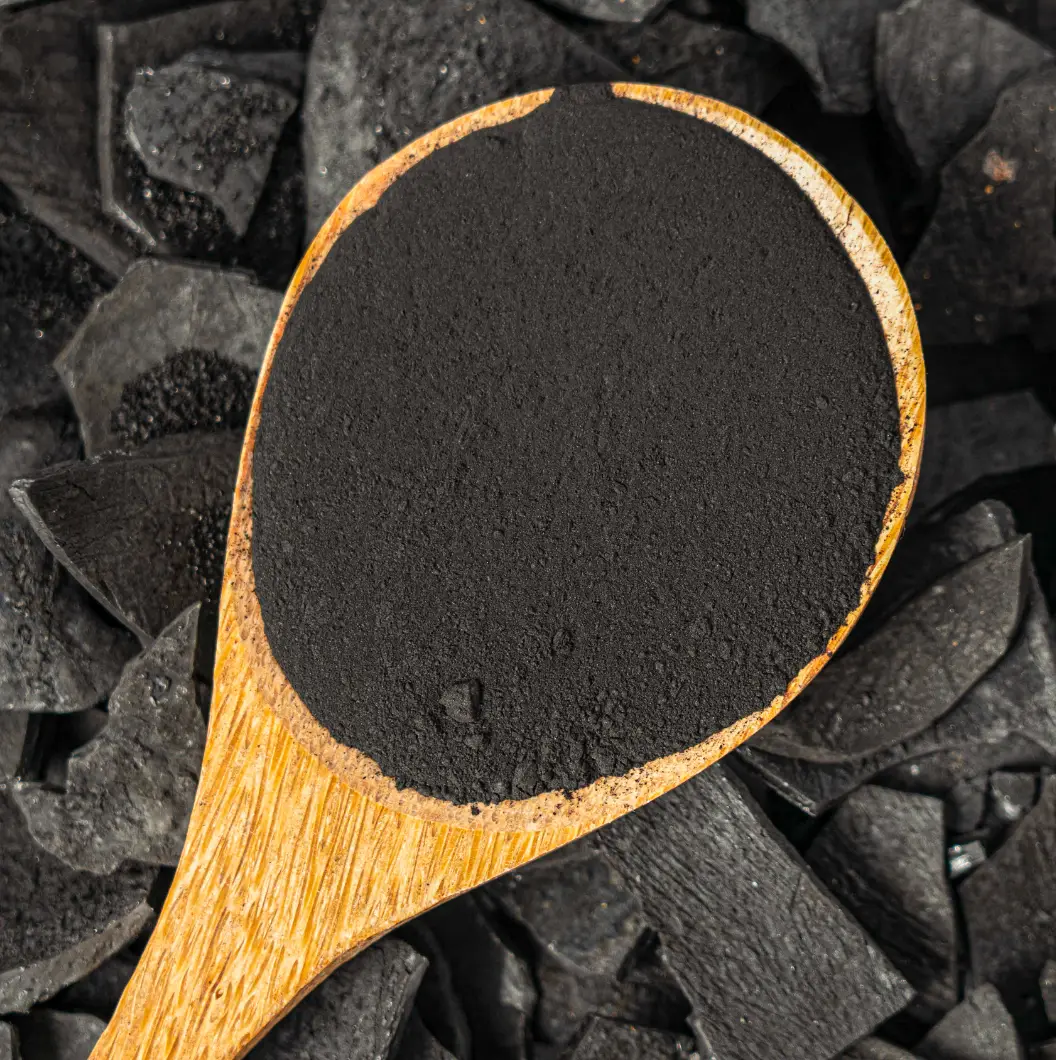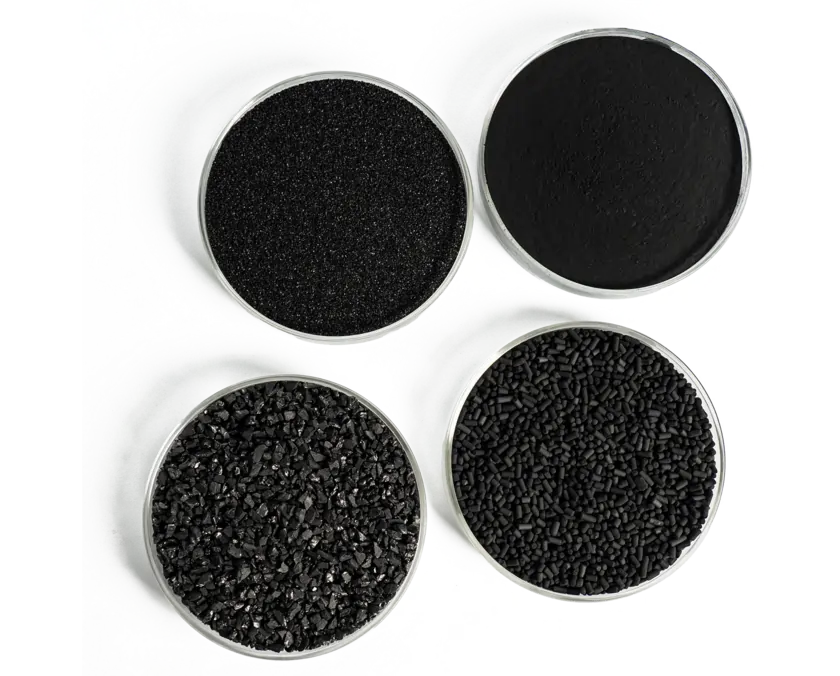Activated Carbon
- Haycarb
- Activated Carbon
What is Activated
Activated carbon is a versatile, porous, irregularly structured material made primarily from carbon. It is naturally derived from sources like wood, coconut shells, or coal and features a range of pore sizes, from visible cracks to microscopic dimensions. With its large surface area, activated carbon is excellent for adsorbing and trapping molecules, making it useful in various adsorbent applications. It is crucial for removing impurities from gaseous and liquid media through a mechanism referred to as adsorption. Due to its extensive internal pore network and high surface area, activated carbon allows for high-efficiency adsorption.
Haycarb is one of the world's leading suppliers of powdered, granulated and extruded activated carbon.
How Does Activated Carbon Work?
Activated carbon operates primarily through the process of adsorption, where contaminant molecules in a fluid phase (either gas or liquid) adhere to the surface of the carbon material. The large surface area given by its extensive network of pores results in numerous adsorption sites. As the contaminated fluid travels through the activated carbon, Van der Waals forces and other weak interactions attract and hold the contaminants in the pores. This effective trapping mechanism allows activated carbon to remove various organic and inorganic substances, including chemicals, toxins and odors, making it a powerful tool for purification and filtration.


Types of Activated Carbon
Powdered Activated Carbon (PAC)
Granular Activated Carbon (GAC)
Pelletized Activated Carbon
Production Process of Activated Carbon
Chemical Activation
Steam Activation

Properties of Activated Carbon
High Surface Area
Pore Structure
Adsorption Capacity
Why Choose Activated Carbon?
Cost Effectiveness
Environmental Benefits
Versatility
Selecting Activated Carbon for Your Application
Different shapes of activated carbon and system design
Activated carbon comes in various shapes – granular, powdered and pelletized – each optimized for different systems and applications. Granular activated carbon (GAC) is suited for water treatment because it can handle lower pressure drops and higher flow rates. Powdered activated carbon (PAC) is ideal for batch processes or rapid adsorption needs like waste treatment. Pelletized carbon, known for its high density, uniform particle size and low dust content, is preferred for air purification, where minimal pressure drop is crucial. Effective carbon selection must also consider system design, including factors such as flow rate, contact time, and the type of bed (fixed, moving, or fluidized), to ensure optimal interaction with contaminants and prolong system efficiency and durability. Therefore, the selection of activated carbon must be aligned with both the physical properties of the carbon and the specific operational parameters of the system it will be utilized in.
Particle size and adsorption kinetics
Pore size distribution and other parameters
Selecting activated carbon based on pore size distribution is essential for aligning the carbon’s properties with specific adsorption needs. Pore sizes are divided into micropores (less than 2 nm), mesopores (2-50 nm), and macropores (over 50 nm). With its extensive surface area, microporous carbon is ideal for adsorbing small molecular contaminants like gases and volatile compounds. Mesoporous and macroporous carbons are more suitable for larger molecules in liquid-phase applications, such as colors and odors.
In addition to pore size, other crucial factors include total surface area, pore volume, and the surface’s chemical nature. These factors impact the carbon’s affinity for various contaminants and overall adsorption capacity. Ensuring compatibility between the carbon’s properties and the specific contaminants and medium is vital for effective purification.

At Haycarb PLC, our team of experts is dedicated to helping you find the most effective purification solutions customized to your specific requirements. We specialize in offering Coconut Shell Based Activated Carbon, known for its superior performance and sustainability, alongside professional guidance in selecting the perfect activated carbon from our wide range of products. Our solutions are designed to align seamlessly with your processes, ensuring operational excellence while promoting environmental sustainability.
Contact Us
Please fill in the required information and our team will be happy to help you find the right solutions.




